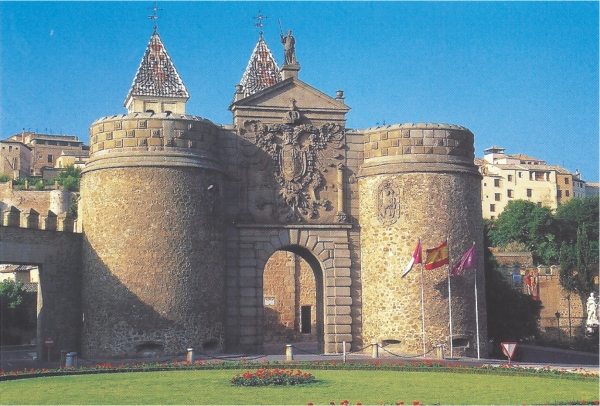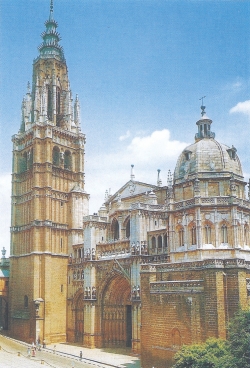| Home - Back Issues - The Team - Contact Us |
 |
| Volume 11 |Issue 20| May 18, 2012 | |
|
|
Travel The Lure of Madrid and Toledo Azizul Jalil
Spain is known for the Alhambra, Cordoba and its Moorish culture, Columbus and his discoveries, bull fights and matadors. The country of Pablo Picasso and Salvador Dali, guitar music and rhythmic flamenco dance and the tragic civil war in the late nineteen thirties always had a special attraction for me. Two short visits to Madrid and Barcelona more than two decades ago left unforgettable images in my mind, but that was not enough. So my wife and I felt enthusiastic when an opportunity to go to Spain arose at the end of February 2012. It was not the best of time for tourism because of the cool weather and a recession-plagued economy with about 25 per cent unemployment. We went nonetheless as it was on our way to Dhaka and, in any case, we needed a few days of rest during the long journey from the US. With Atlantic to the East and Mediterranean to the south, weather-wise, Spain was caught between winter and spring – it had not made up its mind about which one to embrace at the end of February. Since we were out most of the time, we dressed prudently and avoided late-night programmes. In addition to going around Madrid and its vicinity, we had time only to go to the historic cities of Toledo and Cordoba. Our ambition to see the famous fifteenth century Muslim citadel of learning – Alhambra and the historic city of Granada could not be fulfilled as we didn’t have much time or energy.
The nephew of a Washington friend of ours runs two restaurants of Indian-Bangladeshi cuisine in Madrid. Other Bangladeshi entrepreneurs like him in Spain own 15 other restaurants, an impressive figure, because unlike some parts of Europe like Italy, there are not many Bangladeshis in Spain, most of whom are recent immigrants. We enjoyed his hospitality, benefited from his suggestions to make the most of our four-day trip and got an insight into the life of Bangladeshis in Spain with their indulgence in the divisive, partisan politics back home. We hopped onto a conducted Madrid tour by bus, which enabled us to see the main points of interest in the city. To me, the white, ornamental and cathedral-like Madrid City Hall was most impressive. Built a hundred years ago and known as the Cibeles Palace, it was originally the headquarters of the postal service. It has marble sculptures and fountains in the front. The very large and imposing Las Ventas bullring was of pink colour. Its design reminded me of the Roman Colosseum. A fight was scheduled in the same evening at the stadium.
I had seen bull fighting in Puerto Rico in the mid-sixties but it would have been the first such for my wife. Since we had been in the air or at airports for more than twelve hours the previous day, the tiredness and jet lag did not permit us to enjoy the coveted event. At the Prado, we had to stand for more than an hour in a long line to enter the art museum, which was at the time also displaying selected collections from the Hermitage gallery of St. Petersburg, Russia. The rich resources of two of the world's most famous art galleries made our visit very fulfilling. Next day we went by bus to the 2000-year-old fortified hill-top town of Toledo. Declared a UNESCO World Heritage site in 1986, it is 70-km south of Madrid. Toledo was a multi-cultural city of Christians, Jews and Muslims. On the way to the city, we saw vast, fertile agricultural land and numerous olive trees and vineyards. Toledo was the capital of Spain until 1861, when Madrid became the capital. We entered the walled city with its Alcazar (fort-palace) passing through the 16th century Puerta de Bisagra, a palatial gate with its coat of arms and stone towers. We saw the 190-feet high, 13th century cathedral which took more than 200 years to complete and the ancient synagogue. Toledo is like a museum and has to be seen on foot, which poses problems for those who have difficulties in walking long and uphill. We went from the fort by taxi to Circo Romano to the Factory Square outside the walled city. It was located by the side of the Tagus River flowing through the city. In the factory, fine ornamental swords, metal objects with gold inlay of intricate Moorish floral designs, and broaches, pendants of similar designs for ladies were made for sale at the display centre next door. Travelling by bus or car, one can finish visiting Toledo in half a day.
|
||||
Copyright
(R) thedailystar.net 2012 |


